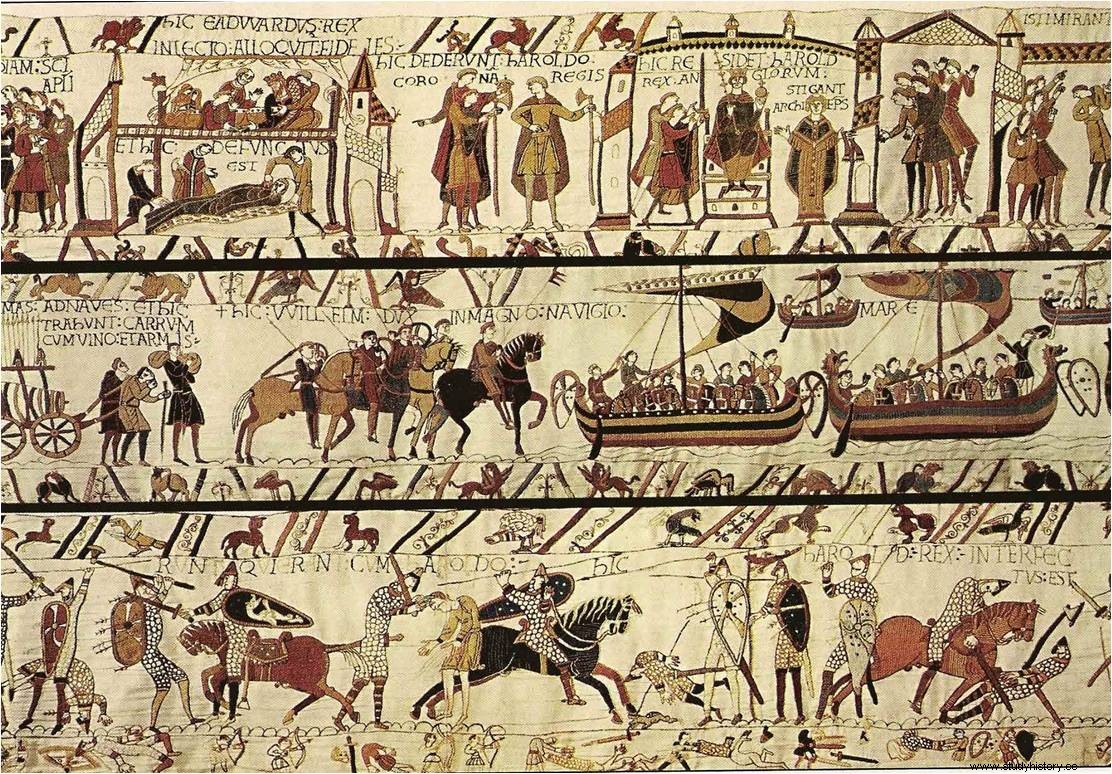The Battle of Hastings gave the throne of England to William the Conqueror . The Norman king had been preparing for the invasion of England for several months and, between September 27 and 28, 1066, he crossed the English Channel, skirted the coast, and landed about six miles from present-day Hastings. On October 14 the Anglo-Saxon armies presented battle. The troops of William the Conqueror were preceded by the archers, who were followed by the cavalry and then the infantry while the Anglo-Saxons, with King Harold at the head, they had fallen back in a kind of phalanx with the only protection of their shields. The battle was not long»”about five hours– and the Normans were quickly victorious.

But the best testimony of it is due to a woman, Matilda de Flanders, wife of Guillermo de Normandía . The queen, in addition to giving him ten children, four boys and six girls, ordered the weaving of the so-called Bayeux tapestry , which is preserved in the cathedral of this French city. It is a gigantic work of tapestry, some seventy meters long , in which, panel by panel, as if from a medieval comic it was, the conquest of the English kingdom by the Normans is represented with special attention to the battle of Hastings and the death of King Harold.
In this video you can see the whole tapestry coming to life:
Collaboration of the historian and writer Mª Pilar Queralt
